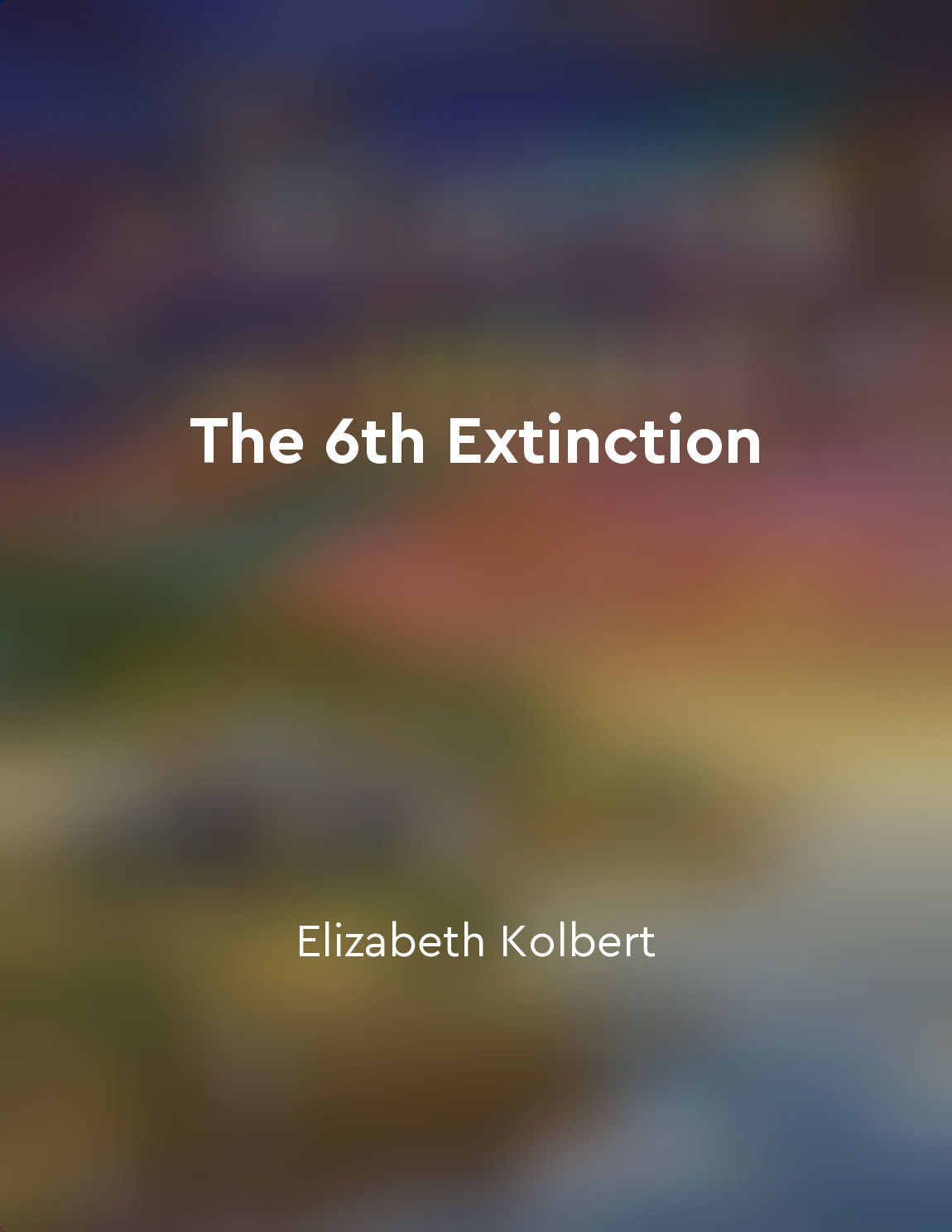Audio available in app
Habitat destruction is a leading cause of species extinction from "summary" of The 6th Extinction by Elizabeth Kolbert
One of the primary drivers of species extinction is habitat destruction. As human activities continue to alter the landscape at an unprecedented pace, countless species are losing their homes and struggling to survive. The destruction of natural habitats disrupts ecosystems and displaces entire populations of plants and animals, pushing them to the brink of extinction. In many cases, species are unable to adapt quickly enough to the rapid changes in their environment, leading to population declines and ultimately, extinction. The process of habitat destruction is often driven by human development, including deforestation, urbanization, and industrialization. As forests are cleared for agriculture or logging, and wetlands are drained for construction projects, the delicate balance of life in these ecosystems is disrupted. Species that depend on these habitats for food, shelter, and breeding are left with nowhere to turn, as their homes are destroyed and fragmented. The consequences of habitat destruction ripple through the entire ecosystem...Similar Posts
Engagement
Engagement is a critical component of our work in natural heritage conservation. It involves forming partnerships, building rel...
Each species has a unique role to play in the ecosystem
In the grand scheme of life on Earth, every species has its own specialized function within the delicate balance of ecosystems....

(Note: The above key ideas have been generated based on the content and themes of the book "The Sixth Extinction" by Elizabeth Kolbert)
The concept of the sixth extinction revolves around the idea that Earth is currently experiencing a mass extinction event, caus...
Renewable energy sources are key to reducing our carbon footprint
The shift to renewable energy sources is crucial in our efforts to diminish the environmental impact of our energy consumption....
Reintroducing species can help restore damaged ecosystems
Restoring damaged ecosystems can be a daunting task, but one approach that has shown promise is the reintroduction of key speci...

The loss of biodiversity is a moral issue as well as an ecological one
The ongoing loss of biodiversity is not just a matter of ecological concern; it is a deeply moral issue as well. As humans cont...
Collective action is needed for a thriving Anthropocene
The Anthropocene is the age in which humanity has become the dominant force shaping our planet. As we continue to alter the Ear...
The consequences of inaction are dire
The world is facing a crisis of unprecedented proportions, one that threatens the very existence of countless species, includin...
Invasive species can outcompete native species
Invasive species have a remarkable ability to outcompete native species in their new environments. These invaders often possess...
Partnerships
Partnerships are crucial for the successful conservation of Washington's natural heritage. By working together with various sta...
